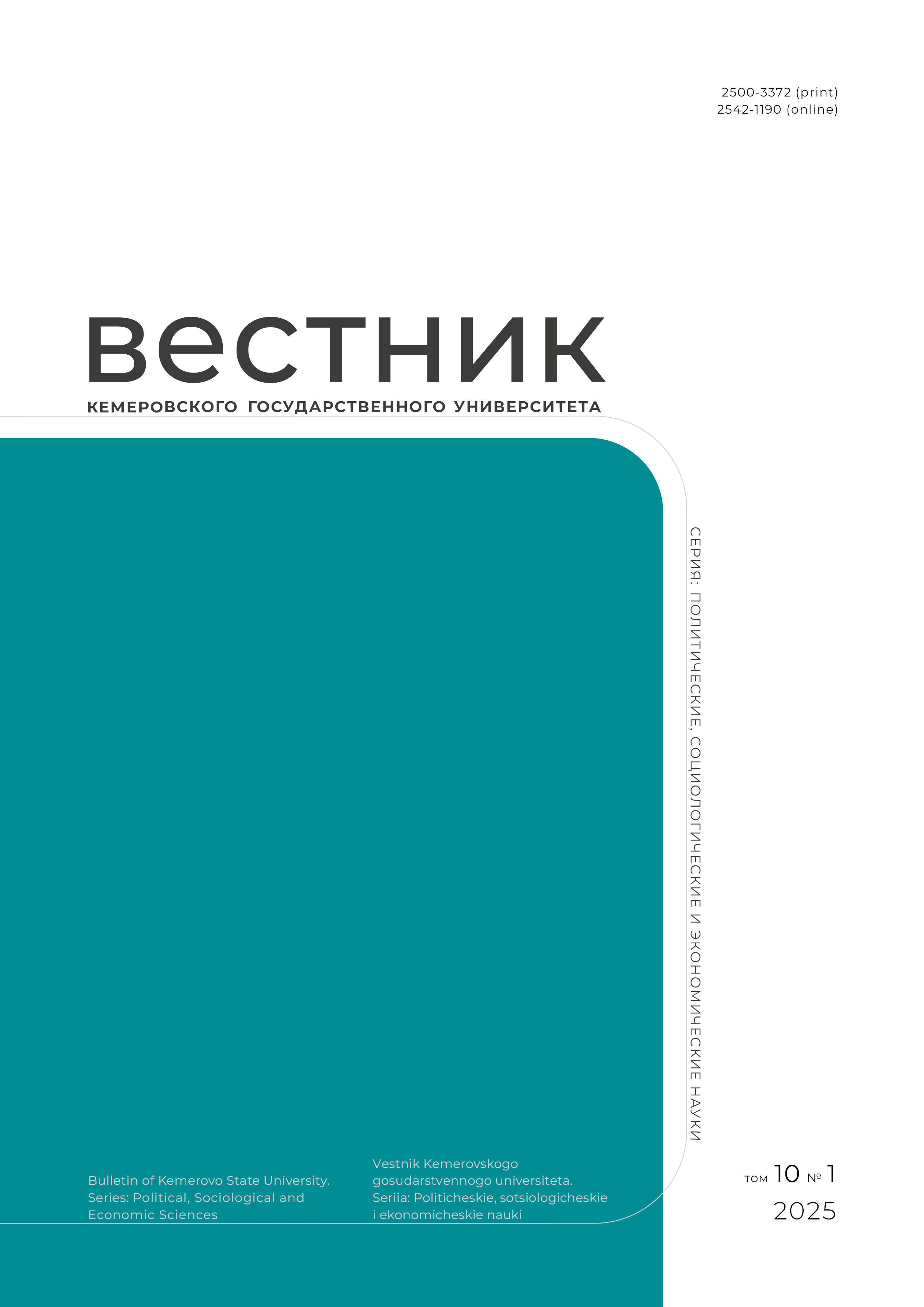from 01.01.2002 to 01.01.2022
Krasnoyarsk, Krasnoyarsk, Russian Federation
Krasnoyarsk, Russian Federation
The modern market environment of the agro-industrial business, despite the obvious increase in its investment attractiveness, is characterized by high variability and unpredictability of external factors. Therefore, strategic development is of particular importance. Strategic development of agro-industrial enterprises should be based on such tools as special financial strategy planning, which provides sustainable development. The present article introduces the problem of sustainable development based on a special financial strategy and aimed at increasing the financial stability of the enterprise. The research objective was to substantiate the methodological provisions for an industry-based financial strategy, as well as to define the philosophical essence of the concept of enterprise sustainability and the features of long-term strategic financial planning. The research relied on statistical method, expert assessment, factor analysis, abstract logical method, and linear programming. The article features an algorithm for financial strategy development. Further research will focus on the practical implementation of the algorithm.
sustainable development, financial stability, strategic development, factors of strategic development, strategic planning tools, strategic map of the balanced indicators, financial stability
1. Bagov V. P., Stupakov V. S., Tokarenko G. S. Evaluating the effectiveness of a corporate system strategy by general-ized characteristics. Finance, 2000, (11): 59-61. (In Russ.)
2. Bryukhovetskaya N. Ye. Globalization and the problems of forming a national financial market. Prometei, 2005, (2): 266-272. (In Russ.)
3. Davidenko N. N. Formation of financial strategy of cor-porate enterprises of the agro-industrial complex. Problemy sovrenennoi ekonomiki (Novosibirsk), 2010, (1-3): 120-125. (In Russ.)
4. Savitskaya G. V. Problematic aspects of calculating the fi-nancial leverage effect. Ekonomicheskii analiz: teoriya i praktika, 2016, (5): 99-111. (In Russ.)
5. Zhurova L. I. Mechanism for the formation of the financial strategy of the enterprise. Digest Finance, 2011, (3): 17-26. (In Russ.)
6. Balabanov I. T. Fundamentals of financial management. 3rd ed. Moscow: Finansy i statistika, 2001, 528. (In Russ.)
7. Bocharov V. V., Leontiev V. E. Corporate finance. St. Pe-tersburg: Piter, 2004, 592. (In Russ.)
8. Lisovskaya I. A. Financial management. Moscow: Rid Grupp, 2011, 352. (In Russ.)
9. Sheremet A. D., Negashev E. V. Methods of financial anal-ysis of the activities of commercial organizations. Moscow: INFRA-M, 2008, 208. (In Russ.)
10. Barabanova I. Iu. The purposes and problems of working out of financial strategy at the enterprise. Vestnik universiteta, 2012, (3): 40-44. (In Russ.)
11. Sanina N. V., Khurchak Yu. S. Formation of a safe finan-cial strategy of development of commercial enterprises. Vestnik Voronezhskogo gosudarstvennogo agrarnogo univer-siteta, 2015, (4): 259-268. (In Russ.)
12. Fadeeva Yu. V. Development of financial strategy as the basis for the effective management of the organization. Sovremennye problemy prava, ehkonomiki i upravleniya, 2015, (1): 162-166. (In Russ.)
13. Abryutina M. S., Grachev A. V. Analysis of the financial and economic activities of the enterprise. 3rd ed. Moscow: Delo i Servis, 2001, 272. (In Russ.)
14. Bykova E. V. Cash flow indicators in the assessment of en-terprise financial stability. Finance, 2000, (2): 56-59. (In Russ.)
15. Ilyukhin V. E. The impact of financial leverage on the effi-ciency of companies. Journal of Corporate Finance Re-search, 2015, (2): 24-36.
16. Naumov A. A., Uvarov E. B. Financial leverage: problems and solutions. ISJ Theoretical & Applied Science, 2014, (9): 180-182. (In Russ.) http://dx.doi.org/10.15863/TAS.2014.09.17.31
17. Stoianova E. S., Krylova T. B., Balabanov I. T., Byko-va E. V., Kukukina I. G., Maslenchenkov Iu. S., Blank I. A., Vashchenko T. V. Financial management: theory and practice. 6th ed. Moscow: Perspektiva, 2010, 656. (In Russ.)
18. Blank I. A. Financial management, 2nd ed. Kiev: Elga, Ni-ka-Tsentr, 2004, 656. (In Russ.)
19. Kovalev V. V. Financial management: theory and practice. 3rd ed. Moscow: Prospekt, 2017, 1104. (In Russ.)
20. Titman S. D. The effects of capital structure on a firm's liq-uidating decision. Journal of Financial Economics, 1984, 13(1): 137-151. https://doi.org/10.1016/0304-405X(84)90035-7
21. Myers S. C. The capital structure puzzle. The Journal of Fi-nance: Proc. 42nd Annual Meeting, San Francisco, CA, 28-30 Dec 1983. Wiley, 1984, vol. 39, iss. 3, 575-592. https://doi.org/10.2307/2327916
22. Gupta M. C. The effect of size, growth and industry on the financial structure of manufacturing companies. The Journal of Finance, 1969, 24(3): 517-529. https://doi.org/10.1111/j.1540-6261.1969.tb00370.x
23. Bakulevskaya L. V. Essence of modern financial manage-ment and its influence on development of financial strate-gy of the organization. Ekonomicheskie nauki, 2009, (4): 289-295. (In Russ.)
24. Spenser H. The Synthetic philosophy. Kiev: Nika-Tsentr, 1997, 512. (In Russ.)
25. Tsvettsykh A. V., Lobkov K. Yu. Financial stability of the enterprise: essence and assessment. Azimuth of Scientific Research: Economics and Administration, 2021, 10(1): 371-374. (In Russ.) https://doi.org/10.26140/anie-2021-1001-0092

















